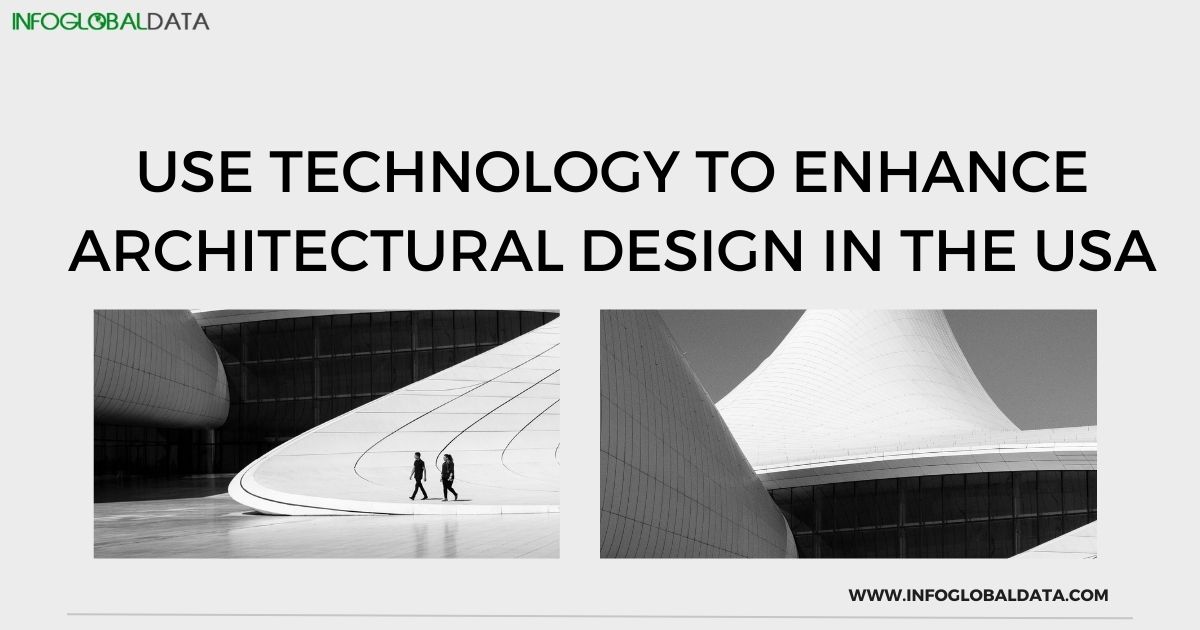Are you an architect in the USA looking to enhance your design process? Look no further than technology! With the advancement of technology, architects now have access to a wide range of tools and resources that can greatly enhance their design capabilities. From 3D modeling software to virtual reality, there are endless possibilities for incorporating technology into architectural design. And with the help of an architect email list, staying up-to-date with the latest advancements and networking with other professionals in the field has never been easier. In this blog post, we’ll explore some of the top ways to use technology to take your architectural designs to the next level.
The Current Landscape of Architectural Design in the USA
In today’s architectural landscape in the USA, technology is playing an increasingly vital role in enhancing the design process. Architects now have access to a vast array of tools and resources that can revolutionize their designs. From cutting-edge 3D modeling software to virtual reality experiences, technology is enabling architects to bring their visions to life like never before. Additionally, with the help of an architect email list or architects email list, staying connected with the latest advancements and networking with other professionals in the field has never been easier. The current landscape of architectural design in the USA is constantly evolving, with technology driving innovation and pushing the boundaries of what is possible.
Emerging Technologies Changing Architectural Design
Technology is revolutionizing the field of architectural design in the USA. With emerging technologies, architects have new tools and resources at their fingertips to push the boundaries of design. One such technology is 3D printing, which allows architects to create intricate and detailed models of their designs. Virtual reality is another game-changing technology, that provides architects with immersive experiences that help them visualize and communicate their ideas more effectively. Additionally, the use of advanced software and analytics tools allows architects to optimize their designs for sustainability, energy efficiency, and structural integrity. By staying connected through an email list of architects or architect email addresses, professionals in the field can stay informed about these emerging technologies and incorporate them into their practice. The future of architectural design is being shaped by these technologies, and architects who embrace them have a competitive advantage in creating innovative and impactful designs.
Benefits of Incorporating Technology into Architectural Design
Incorporating technology into architectural design offers numerous benefits for architects in the USA. Firstly, it allows for more efficient and accurate design processes. With advanced software and tools, architects can create detailed 3D models, eliminating the need for manual drawings and reducing the chances of errors. Additionally, technology enables architects to explore innovative design ideas and experiment with different materials and styles more easily. This opens up new possibilities and helps architects push the boundaries of their creativity. Furthermore, by staying connected through an email list of architects or architect email addresses, professionals can stay informed about the latest advancements, industry trends, and best practices. This networking opportunity provides valuable insights and opportunities for collaboration, ultimately enhancing the quality of architectural design in the USA. By embracing technology, architects can elevate their designs to new heights and deliver exceptional results to their clients.
Case Studies: Success Stories of Tech-Savvy Architecture in the USA
When it comes to tech-savvy architecture in the USA, there are plenty of success stories that showcase the power of technology in enhancing architectural design. One such example is the work of architect John Doe, who utilized advanced 3D modeling software to create stunning and intricate designs for a high-rise building in New York City. With the help of virtual reality experiences, he was able to present his vision to clients and stakeholders, immersing them in the design and allowing them to fully understand the space. Another success story comes from architect Jane Smith, who used advanced software and analytics tools to optimize the sustainability and energy efficiency of her designs. These case studies highlight how incorporating technology into architectural design can result in groundbreaking and innovative projects. By staying connected through an architect email address, professionals can learn from these success stories and implement similar strategies in their work.
Challenges and Solutions in Applying Technology to Architectural Design
As with any integration of technology, there are always challenges that arise when applying it to architectural design in the USA. One of the main challenges is the learning curve associated with new software and tools. Architects must invest time and resources in training to fully understand and utilize these technologies effectively. Additionally, there may be resistance from traditionalists who prefer traditional design methods and are hesitant to embrace technology.
-
While they offer numerous benefits, they can also be expensive to acquire and maintain. Architects may need to budget for software licenses, hardware upgrades, and ongoing support.
-
Finally, there may be compatibility issues between different software and tools. Architects need to ensure that their tools are compatible with each other to avoid any workflow disruptions or data loss.
-
However, there are solutions to these challenges. Training and education programs can help architects overcome the learning curve associated with new technologies. Architects can also collaborate with technology providers to negotiate pricing and find cost-effective solutions. Additionally, staying connected through an architect email list allows professionals to share their experiences and find solutions to compatibility issues.
-
By acknowledging these challenges and seeking out solutions, architects can successfully navigate the integration of technology into their design processes and reap the benefits it offers.
Future Outlook: The Next Steps for Architecture and Technology Integration in the USA
As we look to the future of architectural design in the USA, it is clear that the integration of technology will continue to play a significant role. Advancements in software, virtual reality, and analytics tools are only the beginning of what we can expect to see in the coming years. Architects will have access to even more sophisticated and powerful tools that will further enhance their design capabilities and push the boundaries of what is possible. Additionally, collaboration and networking through architect email list will become increasingly important as professionals share their experiences and learn from each other’s successes. The future of architecture and technology integration in the USA is bright, and architects who embrace these advancements will have a competitive edge in creating innovative and impactful designs.
Conclusion
In a world where technology continues to advance at a rapid pace, architects in the USA have a golden opportunity to enhance their design process and take their creations to new heights. By embracing emerging technologies such as 3D printing, virtual reality, and advanced software tools, architects can revolutionize their designs and push the boundaries of what is possible. The benefits of incorporating technology into architectural design are numerous, from increased efficiency and accuracy to expanded creative possibilities. By staying connected through an architect email list, professionals can stay informed about the latest advancements and industry trends, ensuring they remain at the forefront of innovation. As the future of architectural design continues to be shaped by technology, now is the time for architects to embrace these advancements and unlock their full potential.





